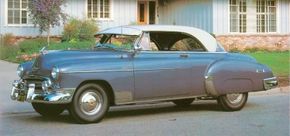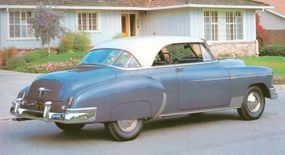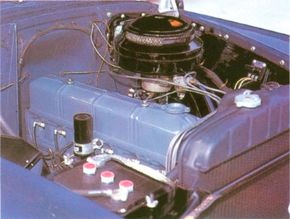The 1950-1952 Chevrolet Bel Air was one of the first affordable hardtop convertibles, but the hardtop concept was not new. The decade-long progress of that idea -- from top-of-the-line innovation to popular feature -- is a fascinating one.
Advertisement
Business tends to approach new ideas with a mixture of hope and skepticism. Depending on public response, an innovative product or feature can mean either high sales, busy factories, and windfall profits -- or big losses, employee cutbacks, and damaged reputations.
Car companies are no less cautious, but General Motors no doubt felt quite sanguine about its new "hardtop-convertibles" of 1949. Soft-top cars had traditionally been a pain in the rain -- and winter -- and the advent of better roads and higher speeds made open-air driving increasingly less practical after World War II. This suggested that the public might go for a sedan without B-posts but with windows that still rolled down completely -- a hybrid style providing convertible airiness when opened up, closed-car comfort and weather protection when buttoned up, and the safety of a fixed steel roof all the time.
It seemed like a fine idea -- so much so that others thought of it besides GM. Most recently, in 1946, Chrysler had built seven prototype hardtops by grafting steel club-coupe roofs onto Town & Country convertibles, but decided not to proceed with series production right away.
This left GM to pioneer the concept in anything approaching significant volume, though Kaiser spun off an interesting variation the same year with its Virginian "Hard Top," basically that firm's convertible sedan with its curious little fixed, glass-filled B-posts, to which a canvas-covered steel top was welded.
Detroit automakers typically introduce new ideas on lower-volume models to minimize the risk of lost design, tooling, and marketing funds should the innovation bomb. Thus, GM tested the hardtop waters with senior Buick, Cadillac, and Oldsmobile models.
Though mid-year introductions and highish prices kept 1949 sales modest -- respectively, 4,343 Roadmaster Rivieras, 2,150 Series Sixty-Two Coupe de Villes, and 3,006 Futuramic 98 Holidays -- they were sufficient to encourage the company to proceed with the lower-priced, higher-volume junior versions planned for 1950.
These duly arrived as the Chevrolet Styleline DeLuxe Bel Air, Oldsmobile Futuramic 88 DeLuxe Holiday, Buick Super Riviera, and no fewer than four Pontiac Chieftain Catalinas.
Go to the next page to find out how the Bel Air fared in the new hardtop field.
For more information on cars, see:
- Classic Cars
- Muscle Cars
- Sports Cars
- Consumer Guide New Car Search
- Consumer Guide Used Car Search
Advertisement



